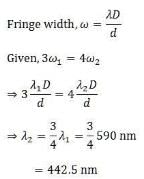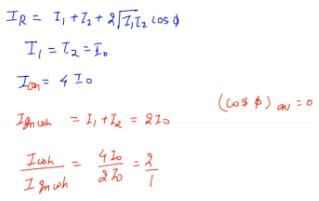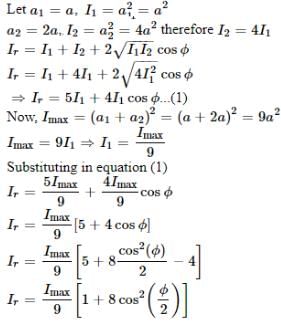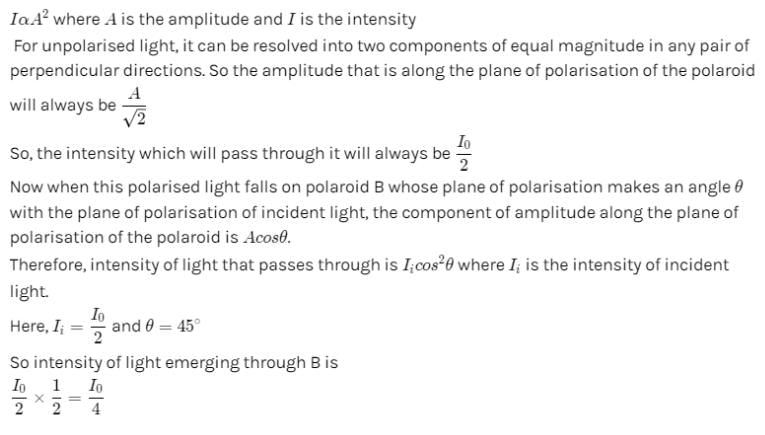NEET Previous Year Questions: Waves - 1 - NEET MCQ
14 Questions MCQ Test Topic-wise MCQ Tests for NEET - NEET Previous Year Questions: Waves - 1
To demonstrate the phenomenon of interference we require two sources which emit radiations of
(AIEEE 2003)
The maximum number of possible interference maxima for slit-separation equal to twice the wavelength in Young's double-slit experiment, is
(AIEEE 2004)
When an unpolarized light of intensity  is incident on a polarizing sheet, the intensity of the light which does not get transmitted is
is incident on a polarizing sheet, the intensity of the light which does not get transmitted is
(AIEEE 2005)
If I0 is the intersity of the principal maximum in the single slit diffraction pattern, then what will be its intensity when the slit width is doubled ?
(AIEEE 2005)
A Young's double slit experiment uses a monochromatic source. The shape of the interference fringes formed on a screen is
(AIEEE 2005)
In a Young's double slit experiment the intensity at a point where the path difference is (
being the wavelength of the light used) is I. If I0 denotes the maximum intensity,
is equal to
(AIEEE 2007)
A mixture of light, consisting of wavelength 590 nm and an unknown wavelength, illuminates Young's double slit and gives rise to two overlapping interference patterns on the screen. The central maximum of both lights coincide. Further, it is observed that the third bright fringe of known light coincides with the 4th bright fringe of the unknown light. From this data, the wavelength of the unknown light is
(AIEEE 2009)
The initial shape of the wave front of the beam is
(AIEEE 2010)
This question has a paragraph followed by two statements, Statement I and Statement II. Of the given four alternatives after the statements, choose the one that describes the statements.A thin air film is formed by putting the convex surface of a plane-convex lens over a plane glass plate. With monochromatic light, this film gives an interference pattern due to light reflected from the top (convex) surface and the bottom (glass plate) surface of the file
Statement I : When light reflects from the air-glass plate interface, the reflected wave suffers a phase change or .
Statement II : The centre of the inerference pattern is dark.
(AIEEE 2011)
In a Young's double slit experiment, the two slits act as coherent source of waves of equal amplitude A and wavelength In another experiment with the same arrangement the two slits are made to act as incoherent sources of waves of same amplitude and wavelength. If the intensity at the middle point of the screen in first case is I1 and in the second case I2, then the ratio
is
( AIEEE 2011)
At two points P and Q on screen in Young's double slit expereiment, waves from slits S1 and S2 have a path difference of 0 and respectively. The ratio of intensities at P and Q will be
(AIEEE 2011)
In Young's double slit experiment, one of the slit is wider than other, so that amplitude of the light from one slit is double of that from other slit. If Im be the maximum intensity, the resultant intensity I when very interfere at phase difference f, is given by
(AIEEE 2012)
A beam of unpolarised light of intensity I0 is passed through a polaroid A and then through another polaroid B which is oriented so that its principal plane makes an angle of 45° relative to that of A. The intensity of the emergent light is :
(AIEEE 2013)
Two coherent point sources S1 and S2 are separated by a small distance 'd' as shown. The fringes obtained on the screen will be :
(AIEEE 2013)
|
9 docs|806 tests
|























